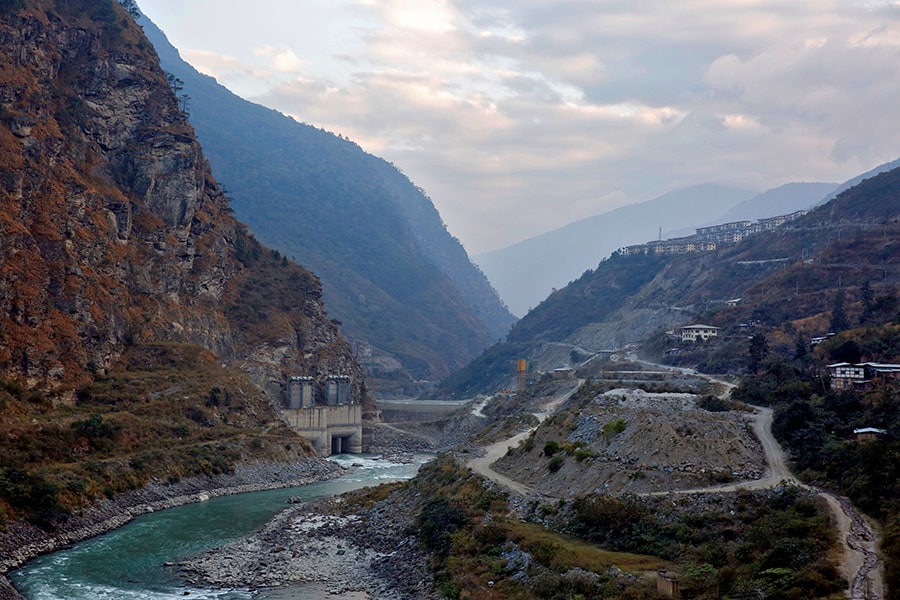
Bhutan: A tiny nation celebrates its strategic might
Amidst China's efforts to find a foothold in the kingdom, Bhutan flaunts its mutual, geostrategic security partnership with India. Even as it grapples with economic complexities and regional dynamics, Bhutan continues to hold India's assistance dear for its socio-economic development
 Image: Money SHARMA / AFP
Image: Money SHARMA / AFP
This is a general view of Bhutan's capital, Thimphu. Bhutan has seen decades of growth in relative peace, and its per capita income is the highest in the region. It abides by its unique realities as a nation with a planned political reform program amidst its flourishing monarchy. India's development assistance to Bhutan, beginning in the early 1960s, has put it firmly on the path of becoming a high-income nation.
 Image: PIB / AFP
Image: PIB / AFP
India's Prime Minister Narendra Modi and Bhutan's King Jigme Khesar Namgyel Wangchuck meet at the Tashichho Dzong Palace in Thimpu on March 22, 2024. On his two-day state visit to the tiny but strategic Himalayan nation, Modi announced India's decision to double assistance for Bhutan's 13th five-year plan from Rs5000 to Rs10,000 crore.
 Image: AFP
Image: AFP
Map locating the Doklam plateau in the Himalayas, at the centre of a dispute between China and India. Lying between China's Chumbi Valley to the north, Bhutan's Ha District to the east, and India's Sikkim state to the west, Doklam (called Donglang by China) has been depicted as part of Bhutan in the Bhutanese maps since 1961, but China also claims it. In 2017, Chinese army engineers began to build a road through the Doklam plateau. Coordinating with Bhutanese authorities, Indian soldiers across the border intervened and stopped the Chinese crew, leading to a military standoff for months. Since then, China has quietly expanded its border facilities along the Actual Control Line.











